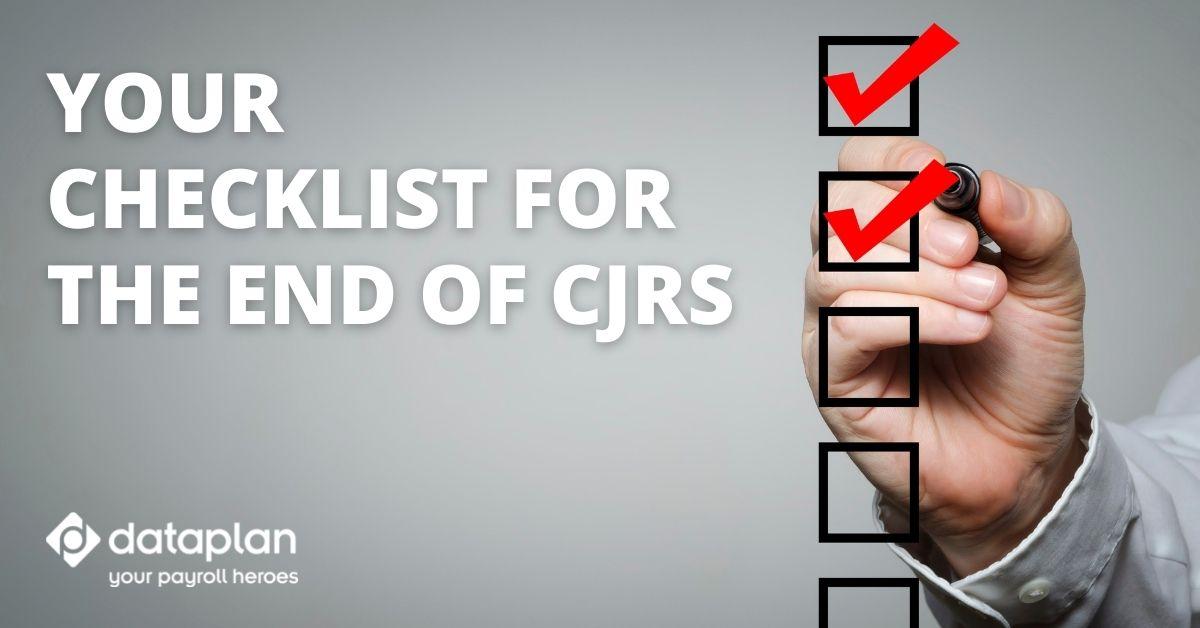
The Coronavirus Job Retention Scheme (CJRS) has played a vital role in preserving jobs and supporting employers throughout the various UK lockdowns. Still, with seemingly no more extensions on the horizon, the scheme is officially set to end on the 30th September 2021. We initially reported on the extension and its impact back in April.
For employers who have been taking advantage of the Government support scheme, it is vital to ensure that you follow all the steps to ensure your claims are submitted correctly and on time before the scheme ends.
Our team of experts are on hand to help Dataplan clients and have been processing furlough claims on their behalf throughout the scheme, but they have given their practical advice for clients and non-clients.
Do not miss the deadlines
The scheme will be ending very soon, and there are only a few opportunities left for claims to be submitted.
New claims for days in August 2021 must be submitted on or before the 14th September 2021, and new claims for days in September 2021 must be made on or before 12th October 2021. Amendments to claims from the period starting 1st November 2020 will only be accepted within 28 calendar days of the claim.
We recommend that you gather the necessary information as quickly as possible and pass this on to your payroll provider, where you plan to make a claim. Dataplan clients can do this using their ePaysafe portal, and for any concerns or queries, they can contact their regular payroll processing team, who are on hand to help.
For Dataplan clients, it is imperative that pay periods ending on 30th September, whether those periods are weekly, fortnightly, four-weekly or monthly, are approved as quickly as possible to make all final claims by the deadline date of 14 October 2021. We can only submit claims when the payroll has been approved and also applies when a pay period straddles the 30th September.
As an example, weekly pay covers the period 26th September to 2nd October. Therefore, we can claim furlough from HMRC for the period 26th September to 30th September. However, the weekly payroll for the week ending 2nd October must be approved before 12th October to enable us to process the claim by the deadline.
Ensure that you have paid the correct contributions
As the scheme comes to an end, the percentage of furlough pay covered by Government support has gradually decreased. Furloughed employees must still receive 80% of their usual wage for hours not worked up to a cap of £2,500 per month, but only 60% will be claimable, up to a cap of £1,875. The employer is required to make up the remaining 20%.
Our experts recommend checking with your payroll provider if you have not already done so to ensure you are topping up wages where required.
Your options for ending furlough
Since the furlough scheme will be ending, there are only a few options for employers with previously furloughed employees. These are:
- Bring the employees back to work with the same employment contract
- Bring the employees back to work under a different contract
- Let the employees go through a process of redundancy
As an employer, you must ensure that your employees are given the correct amount of notice in any above instances. In addition, if their contract is subject to change, this must be agreed with the employee with the necessary documentation provided in a timely fashion. There is no statutory notice period for ending furlough; however, notice periods do apply in instances where you wish to end employment or change a contract.
Where redundancy is being considered, the correct process must be followed to treat the affected employees fairly and within their legal rights.
Failure to adhere to this guidance could leave the employer subject to tribunal claims. Therefore, we recommend reviewing your furloughed employees as soon as possible to decide your options and notify the impacted employees.
Avoiding redundancy
Whilst the Government-funded furlough support is coming to an end; there may still be some options for employers who cannot bring employees back on their previous contract to consider.
These are:
- Reduced hours
- Redeployment
- Voluntary redundancy
We recommend that where any of the above options are being considered, you keep your payroll provider up to date with the changes to avoid the risks of under or overpayment.
Dataplan are one of the UK’s leading providers of specialist payroll and associated services.
From payroll outsourcing and pension service management to ePayslips and gender pay gap reporting; we have a solution for you and your business.
